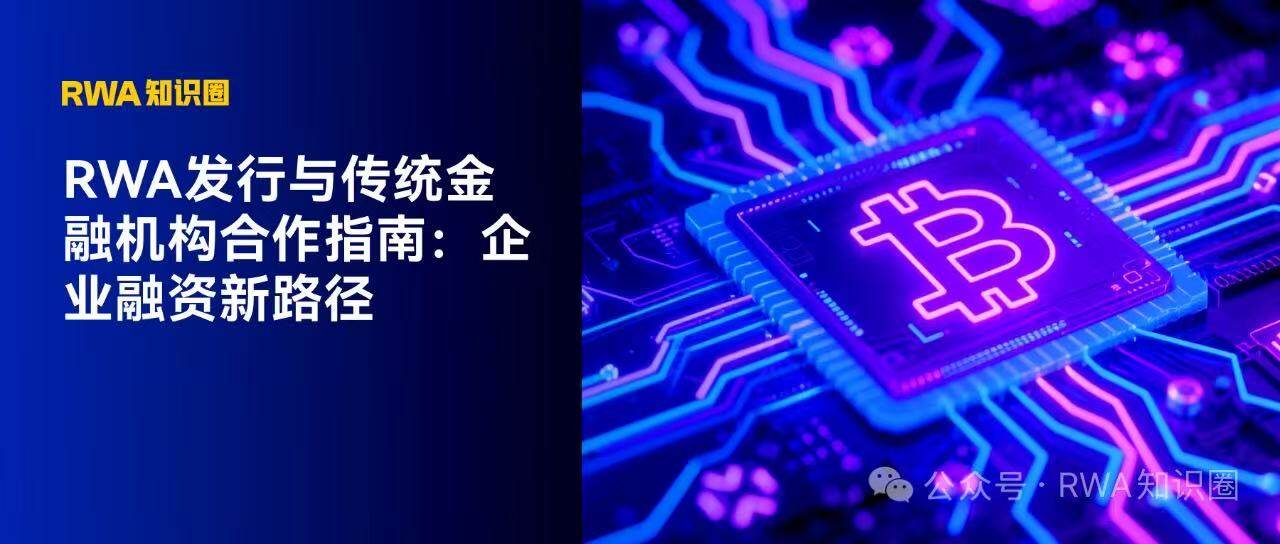
1. How can enterprises leverage RWA to break through financing bottlenecks and embrace the global capital market?
In the wave of digital transformation of the global economy, enterprises face challenges such as narrow financing channels, poor asset liquidity, and high cross-border payment costs. The tokenization of Real World Assets (RWA) has emerged, providing enterprises with new financing paths and asset management methods. By converting traditional assets such as debt, equity, and real estate rental income into digital tokens, and utilizing stablecoins (cryptocurrencies pegged to fiat currencies) to reduce cross-border transaction costs, enterprises can achieve more efficient capital flow. Enterprises can not only enhance asset liquidity but also expand their investor base, lower financing costs, and improve operational efficiency.
However, the efficient issuance of RWA relies on the support of professional financial institutions. How enterprises can leverage banks, asset management companies, and fintech companies to successfully implement RWA is a pressing issue that needs to be addressed.
2. Banks: Traditional Financial Power Supporting Enterprise RWA
In the issuance and implementation of RWA, banks remain a core force. JPMorgan Chase's tokenized deposits (backed by real fiat currency and can be exchanged 1:1 for regulated tokens, circulating on private or public chains) significantly enhance the efficiency of cross-border payments for enterprises: the average cross-border collection speed can be reduced from 7 days to 3 days.
Banks also collaborate with technology institutions to provide near real-time settlement infrastructure (such as zkSync, an Ethereum Layer 2 technology that accelerates transactions and reduces costs), helping enterprises alleviate liquidity pressure and reduce payment friction. Additionally, banks are exploring pilot projects for the tokenization of net asset values, allowing enterprises to finance directly with asset data without complex collateral processes.
In terms of digital asset custody, banks have measures such as Hardware Security Modules (HSM, preventing private key tampering or theft) and Multi-Party Computation (MPC, distributing private keys among multiple parties to enhance security). With asset isolation, transparent reserves, and regular third-party audits, these services not only optimize the RWA issuance process for enterprises but also allow them to reach more Web 2 customer groups, opening new channels for financing. Ensuring the security of enterprise assets guarantees that they remain protected in the event of bankruptcy or unusual circumstances.
3. Asset Management Companies: A New Entry Point for On-Chain Financing
Asset management companies assist enterprises in automating operations, reducing issuance costs, and expanding the coverage of on-chain investors during RWA issuance. By tokenizing funds (converting fund shares into tokens that can be traded on the blockchain), enterprises can provide investors with 24/7 access, instant settlement, and programmable trading while maintaining compliant transfer records.
Asset management companies typically collaborate with leading on-chain custody institutions, such as Anchorage or Coinbase. Through these partners, on-chain transfer agents (which can manage investor identities and trading permissions via smart contracts) and smart contracts can manage KYC (Know Your Customer) / AML (Anti-Money Laundering) and investor whitelists, further reducing the legal and operational complexities for enterprises. This allows enterprises' RWA projects to more smoothly connect with global investors while ensuring compliance in transactions and asset custody.
Therefore, for enterprises looking to quickly reach digitally native investors, asset management companies provide indispensable distribution and compliance support.
4. Fintech Companies: Making Payments Faster and More Convenient for Enterprises
Fintech companies, especially those in payment and consumer finance (PayFi), are building efficient payment and credit services for enterprises using blockchain technology.
Shopping malls, merchants, tourist attractions, or event organizers can directly accept consumer crypto assets (such as Bitcoin, USDC, etc.) by integrating with PayFi systems, lowering payment barriers. At the same time, through digital ticketing and settlement, enterprises can expand into international markets, increasing revenue and enhancing customer experience. In a competitive market environment, blockchain provides out-of-the-box identity verification, payment, and credit infrastructure, enabling enterprises to operate more efficiently with fewer intermediaries.
5. Web 3 and RWA: Enterprises Seizing New Global Capital Opportunities
Web 2 and Web 3 share commonalities and differences in operational logic. For enterprises looking to enter Web 3 or complete RWA issuance, relying solely on their own capabilities often makes it difficult to efficiently find partners and can increase trial-and-error costs. Professional RWA accelerators can help enterprises connect with banks, asset management companies, and fintech companies, quickly establishing paths for issuance and implementation, ensuring that projects maximize benefits in compliance, liquidity, and financing efficiency.
Moreover, according to research by Tren Finance, the RWA market size is expected to grow more than 50 times by 2030, reaching between $4 trillion and $30 trillion. For enterprises, this means not only enhancing asset liquidity but also expanding financing channels, reaching global investors, and leveraging digital asset management (such as on-chain asset tracking and automated settlement) to improve overall competitiveness. By seizing RWA opportunities, enterprises can gain a competitive edge in the digital economy era and achieve true global development.
免责声明:本文章仅代表作者个人观点,不代表本平台的立场和观点。本文章仅供信息分享,不构成对任何人的任何投资建议。用户与作者之间的任何争议,与本平台无关。如网页中刊载的文章或图片涉及侵权,请提供相关的权利证明和身份证明发送邮件到support@aicoin.com,本平台相关工作人员将会进行核查。




